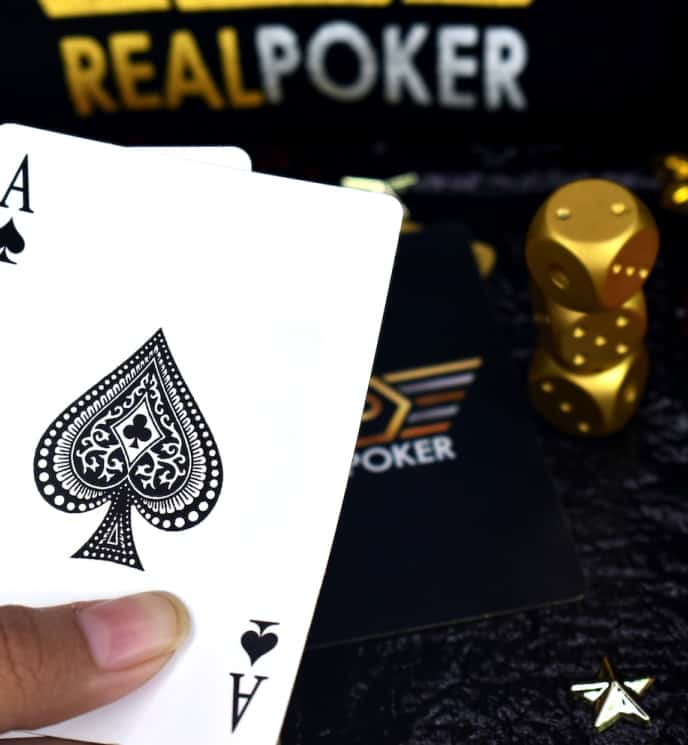Poker Hands
Before we dive into the game’s rules, it’s important to understand the different poker hands.
A poker hand is made up of five cards, and the player with the best hand at the end of the game wins.
The different hands are ranked in order from highest to lowest:
- Royal Flush: This is the highest hand in poker and consists of a Ten, Jack, Queen, King, and Ace of the same suit.
- Straight Flush: This hand consists of five cards in numerical order, all of the same suit.
- Four of a Kind: This hand consists of four cards of the same rank and one random card.
- Full House: This hand consists of three cards of one rank and two cards of another rank.
- Flush: This hand consists of five cards of the same suit, but not in numerical order.
- Straight: This hand consists of five cards in numerical order, but not all of the same suit.
- Three of a Kind: This hand consists of three cards of the same rank and two random cards.
- Two Pair: This hand consists of two cards of one rank, two cards of another rank, and one random card.
- One Pair: This hand consists of two cards of the same rank and three random cards.
- High Card: If no player has any of the above hands, the player with the highest card wins.
Poker is played in rounds, with each round consisting of a betting phase and a showdown phase. During the betting phase, players take turns betting, raising, or folding. The goal of betting is to build the pot and convince other players to either call or fold. In the showdown phase, the remaining players reveal their hands, and the player with the best hand wins the pot.
The rules of poker can vary depending on the variation you are playing, but we will cover the basic rules that apply to most variations.
- Before the game begins, each player puts in an agreed-upon amount of chips to create the pot.
- The dealer shuffles the deck and deals each player two cards face down, also known as the hole cards.
- The first round of betting begins with the player to the left of the big blind (the player to the left of the dealer puts in a mandatory bet known as the big blind, and the player to their left puts in a smaller bet known as the small blind). Each player has the option to fold (quit the game), call (match the current bet), or raise (increase the current bet).
- After the first round of betting, the dealer deals three community cards face up in the middle of the table, also known as the flop.
- Another round of betting begins with the player to the left of the dealer. Players can once again fold, call, or raise.
- The dealer deals one more community card face up, also known as the turn.
- Another round of betting begins with the player to the left of the dealer.
- The dealer deals one final community card face up, also known as the river.
- A final round of betting begins with the player to the left of the dealer.
- If two or more players remain after the final round of betting, a showdown occurs. The player with the best hand wins the pot.
One of the most important strategies for playing poker is to pay attention to your opponents. This means observing their behavior, looking for patterns, and trying to figure out what hands they may have.
This information can be used to make more informed decisions about when to bet, call, or fold.
Another important strategy is to manage your bankroll. This means setting limits on how much you are willing to bet and not going over those limits. It also means knowing when to walk away from a game, especially if you are losing.
Bluffing is another important strategy in poker. Bluffing involves making your opponents think you have a better hand than you actually do. This can be done by making large bets or raises, even when you don’t have a strong hand. However, bluffing should be used sparingly and only when you think it will be effective.
Play Poker Online Free
There are many online platforms where you can play poker for free. One of them is our WSOP free-to-play app which offers a variety of different games and tournaments, so you can find one that suits your preferences.
Playing poker online for free is a great way to practice your skills and learn the game without risking any real money. Playing poker online also provides access to a wider variety of games and opponents worldwide. This means you can challenge yourself against a greater pool of players, improving your skills and strategies.












